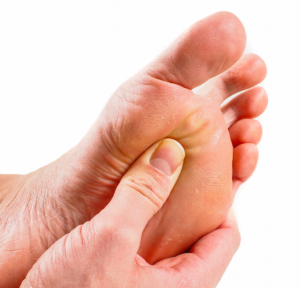 Freiberg’s infarction, or disease, describes the death of bone tissue at the head of the metatarsal (long bone of the foot) because of an interrupted blood supply to the area. This is medically known as avascular necrosis.
While the second metatarsal head is most often affected, avascular necrosis can affect the third and fourth metatarsals. It most often affects young girls during a growth spurt, so between the ages of 8 and 15 years. Adults can also be affected by Freiberg’s, though this is unrelated to growth spurts and growth plates as it often is in kids.
Freiberg’s infarction, or disease, describes the death of bone tissue at the head of the metatarsal (long bone of the foot) because of an interrupted blood supply to the area. This is medically known as avascular necrosis.
While the second metatarsal head is most often affected, avascular necrosis can affect the third and fourth metatarsals. It most often affects young girls during a growth spurt, so between the ages of 8 and 15 years. Adults can also be affected by Freiberg’s, though this is unrelated to growth spurts and growth plates as it often is in kids.
To learn more about kids’ foot problems,
click here.
What causes a Freiberg’s infarction?
Generally, it is the repetitive stress and microtrauma to the growth plate of the at the end of the second metatarsal that results in a Freiberg’s infarction. The impact can cause the joint to collapse and lose its structural integrity, disrupting the blood supply to the area.
Other contributing factors include:
- A short first metatarsal bone
- A long second metatarsal bone
- Poor foot biomechanics that increase forefoot loading, particularly at the second metatarsal
- Trauma to the ball of the foot
- Activities that put repetitive stress on the ball of the foot such as running and dancing
- Anatomical variances in artery distribution in the feet
- Genetic predisposition
What are the symptoms?
Symptoms of a Freiberg’s infarction can include:
- Pain at the end of the affected metatarsal (often the second toe)
- Increased pain and discomfort with physical activity that places pressure on the ball of the foot, especially when pushing off the ground
- Swelling at the affected joint
- Joint stiffness
- Pain worsens with certain footwear such as high heels
How is it treated?
The first step in treatment is to offload the affected metatarsal head at the ball of the foot. This may be done through a cast, a boot, or an orthotic depending on the level of off-loading required. This will help to reduce the initial painful symptoms. Following this, long-term management will look at footwear modifications and using orthotics with metatarsal pads and other features to off-load the forefoot. For severe cases that do not respond well to conservative treatment, surgery may be indicated.
 Freiberg’s infarction, or disease, describes the death of bone tissue at the head of the metatarsal (long bone of the foot) because of an interrupted blood supply to the area. This is medically known as avascular necrosis.
While the second metatarsal head is most often affected, avascular necrosis can affect the third and fourth metatarsals. It most often affects young girls during a growth spurt, so between the ages of 8 and 15 years. Adults can also be affected by Freiberg’s, though this is unrelated to growth spurts and growth plates as it often is in kids.
To learn more about kids’ foot problems, click here.
Freiberg’s infarction, or disease, describes the death of bone tissue at the head of the metatarsal (long bone of the foot) because of an interrupted blood supply to the area. This is medically known as avascular necrosis.
While the second metatarsal head is most often affected, avascular necrosis can affect the third and fourth metatarsals. It most often affects young girls during a growth spurt, so between the ages of 8 and 15 years. Adults can also be affected by Freiberg’s, though this is unrelated to growth spurts and growth plates as it often is in kids.
To learn more about kids’ foot problems, click here.








